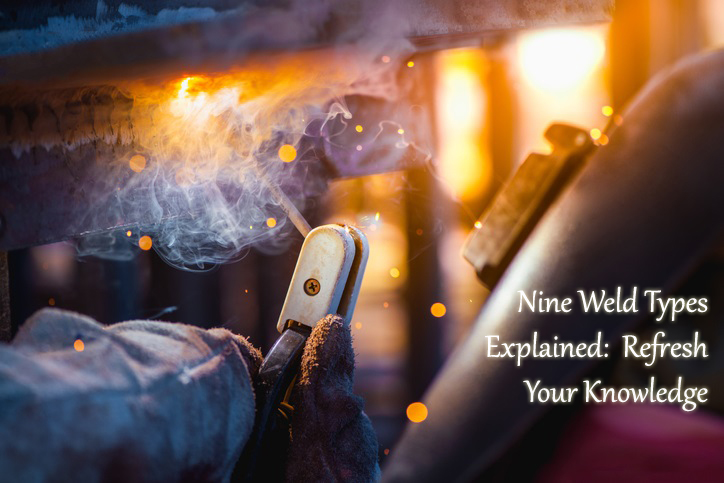9 Weld Types
Knowing the different types of welds enhances your performance and troubleshooting skills. While most welders understand these types, a refresher can sharpen your expertise. Now, let’s explore nine common weld types.
Welds are defined by their shape and the position of the joint. Some welding techniques work in any position, while others are more specific. Essentially, weld types depend on the position of the workpiece or the joint’s location.
Fillet Welds and Groove Welds
Groove and fillet are the two most common types. Fillet welds join metals at a 90-degree angle, adding material mainly to the joint surface. These welds sit on top of perpendicular surfaces and do not penetrate the joint. Variations of fillet welds include full, staggered intermittent, and chain intermittent types.
In contrast, groove welds penetrate the joint, connecting butt joints and depositing material directly into the groove. They apply to sheet metals, plates, and pipe ends. Variations include square groove, single-V, single-bevel, single-U, and single-J. The groove weld type dictates how to prepare the joint and surface.
Surfacing Welds
Surfacing welds rebuild worn metal on surfaces, especially with square butt joints. This method deposits one or more beads to build up the surface to the required dimensions or properties. As a result, it restores the material to its original strength or functionality.
Plug Welds and Slot Welds
Next, plug welds are easy to make. Use them to join overlapping metal pieces when you want to hide the weld or need clearance for another part. These welds form inside an existing hole, typically in one metal piece, to join material members or tee joints. In some cases, they can replace rivets.
Slot welds, however, form in an elongated hole. They join one material piece or a tee joint to another. Additionally, you can open the hole at one end and fill it with weld material as needed.
Upset Welds and Flash Welds
Upset welds, or resistance butt welds, create coalescence over the entire area of abutting surfaces or along a joint. Heat from electric current resistance at the connection point causes this. They are ideal for connecting thicker materials.
Flash welding uses equipment with movable and fixed clamps to grip the parts. Apply voltage to connect the parts. The contact points fuse, creating short-lived arcs that generate heat. Molten metal is expelled as ‘flash,’ and the platen maintains a constant gap until the parts reach the proper temperature. Finally, forge the parts together.
Seam Welds and Spot Welds
Seam welding joins workpieces along a continuous seam, whether they are made of similar or dissimilar materials. Techniques for seam welding include resistance seam welding and friction seam welding. Spot welding, on the other hand, joins sheet metal by applying heat generated from resistance to electric current at the contact points where metal surfaces meet.
Conclusion
Reviewing these nine weld types sharpens your skills and helps you troubleshoot problems more effectively. If you need more information about welding techniques or specific weld types, don’t hesitate to contact us at MuggyWeld.

